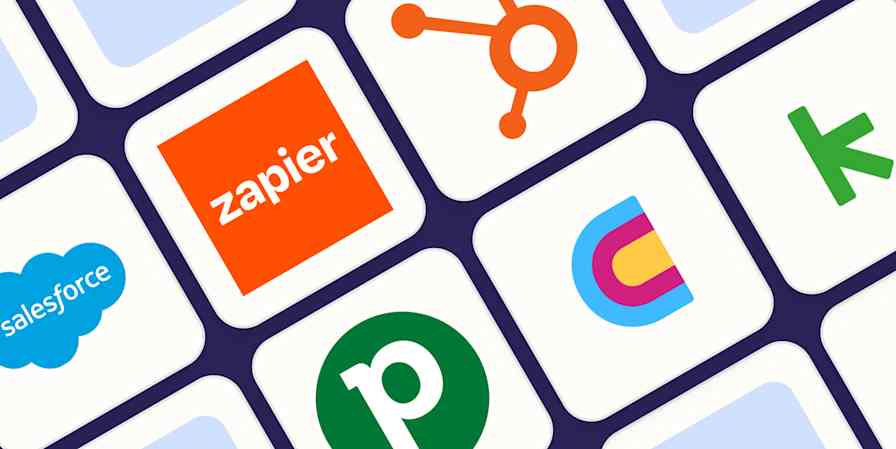When it comes to sales metrics, there's no reason to reinvent the wheel. We asked business and sales leaders which sales performance metrics were most important to their business—here's what they said.
10 sales metrics examples to guide your strategy
1. Sales revenue (leads, actual, and forecasted)
"The primary sales metric that I look at in my business is sales revenue; but within that, I monitor three separate components: sales leads, actual sales/revenue, and forecasted revenue. This way, I'm looking at the complete sales funnel from top to bottom and can apply my time as appropriate.
A lot of business leaders make the mistake of putting all their eggs in one basket, so to speak (i.e., focusing on one or two big customers), which leaves them vulnerable to changes in the market, like the ones we have been going through the past few years, and scrambling to find a new business when their customer mix inevitably develops.
It's much more productive to be focused on the broader sales pipeline by consistently generating new leads while nurturing and growing your existing business. This way, you ensure you have a steady flow of income and can potentially replace lost business and grow."
Amy Zwagerman, Founder & CMO, The Launch Box
2. Customer churn rate
"Customer retention is one of the most important sales metrics because its measure implies product and brand satisfaction. If customers churn after using your product one or two times, there are problematic implications for your business's ability to produce sustainable profits.
Companies must maximize their ability to keep customers through any means because it is much more expensive to gain new customers than to keep existing ones. Maximizing customer satisfaction and NPS scores are both strategies to boost retention when a brand needs to understand its strengths and weaknesses.
Without understanding customer pain points or how products stack up to competitors, you can never improve churn rates consistently. Businesses ultimately rely on customer loyalty to grow, making retention the most crucial factor to focus on and improve."
Guna Kakulapati, Co-Founder & CEO, CureSkin
3. Revenue of new vs. existing customers
"By continuously tracking the metric of revenue percentage between new and existing customers, we can ensure that we are both effectively generating the expected revenue from current clients and also recognizing immediately if we need any necessary adjustments to motivate them to remain loyal customers."
David Derigiotis, CIO, Embroker
4. Average order value (AOV)

"There are always more avenues for businesses to increase their average sales, but using cross-selling and upselling techniques to drive up AOV is crucial for getting the best ROI.
AOV optimization helps online businesses get higher CLV for the same customer acquisition cost. Every eCommerce business has to make the most of each customer interaction, aiming to make the products that their most loyal customers want to buy. Shoppers don't stop at only one thing they like. Using browsing data and retargeting methods, companies can remind and suggest products to customers that they are likely to use so that both parties get the most out of the interaction."
Zach Goldstein, CEO & Founder, Public Rec
5. Close rate
"Close rate can provide valuable insights into the overall health of your sales process, and allows you to identify areas where you need to improve or focus on driving better results.
For instance, if you notice that your close rate is low and falling over time, this may show that your sales team is not presenting the right value propositions to their leads, or perhaps they are not following up with their potential customers in a timely manner.
Either way, close rates give you the opportunity to make changes that will have a positive impact on sales results. Notably, other factors affect your close rate as well, including the size and type of your industry, as well as the overall buying trends within your sector.
Hence, tailor your strategy and approach to sales to your unique business and market conditions."
Joey Sasson, Vice President of Sales & Logistics, Moving APT
6. Monthly recurring revenue (MRR)

"Monthly recurring revenue (MRR) is the north star for our sales teams, especially as a business that uses a subscription sales model.
MRR can be your first indicator to dig a little deeper—if it's down, you can then analyze metrics like churn to determine why revenue is down. An increase in MRR can also provoke you to look into what is giving you the best ROI, such as comparing customer retention versus acquisition.
In short, MRR is the first sign of trouble and the first sign of success as a monthly subscription business."
Volodymyr Shchegel, VP of Engineering, Clario
7. Customer satisfaction score
"The most important sales metric for our business is the customer satisfaction score. This metric helps us measure how well we are delivering on our commitments to our customers, so it gives us valuable insight into their overall experience with our services. It also helps us track customer loyalty, which is essential for long-term success. We use this metric to identify areas of improvement in our sales processes and ensure that our customers feel valued and supported. By measuring customer satisfaction, we can also better understand how our services are performing in the marketplace and make necessary adjustments to achieve greater success."
Tiffany Homan, COO, Texas Divorce Laws
8. Customer lifetime value (CLV)
"As a coaching company, we're in the business of building great relationships with our customers. Our most important sales metric is the customer lifetime value.
This metric gives us an understanding of how much revenue each customer will generate over their lifetime as customers of our company, which then helps us prioritize and tailor our marketing efforts to maximize future return on investment.
Tracking this metric can also help us identify opportunities for upsells and cross-sells, as well as provide insights into customer behavior and loyalty.
Most importantly, this metric is a temperature check on the strength of the relationships we're building, and the value our clients are getting from working with us."
John White, Director, We Run
9. Net Promoter Score (NPS)
"Brand evangelists (as indicated by your NPS) can help you more accurately identify your ideal customer persona to streamline your marketing and sales approach. Unfortunately, many businesses place more emphasis on the number of new leads they generate and close—neglecting the volumes of potential prospects they could accrue from referrals from their existing customers."
Lotus Felix, CEO, Lotus Brains Studio
10. Opportunity-to-win ratio
"Sales require hours and other resources which add associated costs, and looking for ways to reduce those requires an understanding of how much of our efforts end in conversion.
Measuring our opportunity-to-win ratio by counting successful conversions compared to ones open for long periods, lost, or stuck in a stage of the sales funnel, gives us an understanding of the total cost of a sale. This allows us to make adjustments to increase the number of conversions and boost our ROI."
Alexandre Bocquet, Founder & CEO, Betterly
Related reading:










